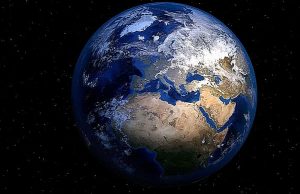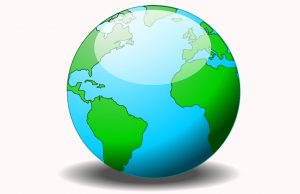Characteristics Of Developed and Developing Countries: The United Nations divides the world’s nations into two main groups: industrialized countries and developing countries. The economic indicators used to categorize nations include GDP, GNP, per capita income, industrialization, standard of life, etc. The term “developed countries” refers to a sovereign state whose economy has advanced significantly and which, in comparison to other countries, has a vast technical infrastructure.

Developing nations are those with low levels of industry and human development. We have collated the differences between developed and developing countries taking into account numerous factors after conducting extensive study on the two.
Recommended: Differences Between Law and Ethics
Definition of Developed Countries
Developing nations are those that are still in the early stages of industrial development and have low per capita incomes. These nations fall within the third world country category. They are also referred to as less developed nations. Developing nations rely on developed nations to help them grow industries across the nation.

The nation has a low Human Development Index (HDI), which translates to low Gross Domestic Product, a high rate of illiteracy, subpar educational, transportation, and medical facilities, unmanageable public debt, unequal income distribution, high birth and death rates, malnutrition of both mother and child, which results in a high infant mortality rate, and a high level of unemployment and poverty.
Also see: Causes, Effects and Solutions to Poverty in Africa
Definition of Developing Countries
The phrase “developed countries” refers to nations that have advanced economically and industrially. Due to their independence, the developed countries are frequently referred to as the first world or advanced countries. Statistics from the Human Development Index (HDI) place the nations according to their level of development.

Developed countries are those that have high living standards, high GDP, high child welfare, health care, excellent medical, transportation, communication, and educational facilities, better housing and living conditions, industrial, infrastructural, and technological advancement, higher per capita income, increases in life expectancy, etc. Due to their post-industrial economies, these nations earn more money from the industrial sector than the service sector.
Also see: Most Powerful Countries in Asia 2022
Major Characteristics of Developing Countries
1. Low real per capita income: When compared to rich countries, the actual per capita income of emerging nations is quite low. This indicates that the average income or income per person in emerging countries is low and insufficient for saving or investing.
As a result, low per capita income in emerging nations causes poor investment and savings, which leads to a vicious cycle of poverty. One of the biggest issues that undeveloped nations deal with is this.
2. Massive Poverty: The majority of people in developing countries have been affected by the issue of poverty. Even the most fundamental demands cannot be met by them. The issue of poverty is also reflected in the low per capita in emerging countries.

So, in addition to low per capita income, poverty in undeveloped nations is also defined as the inability to meet basic requirements, illiteracy, unemployment, and a lack of other socioeconomic engagement and access.
Also see: Advantages and Disadvantages of a written constitution
3. Rapid growth in population: Developing nations either experience rapid population increase or have greater populations. Different factors contribute to the faster population increase in emerging nations. People feel more secure and have more children in these nations because of the higher newborn and child mortality rates.
People in underdeveloped nations are also influenced to have more children by a lack of family planning information and alternatives, a lack of sex education, and beliefs that having more children will increase the work force, which will increase income and riches. The idea of conservatism existing in such countries is another argument in favor of this.
4. Unemployment and underemployment: A Problem: Other significant issues and prevalent traits of emerging or undeveloped countries include unemployment and underemployment. The issue of underemployment and unemployment in emerging nations is brought on by factors such as an overreliance on agriculture, a lack of industrialization, an improper use of natural resources, a lack of workforce planning, and others. Underemployment is a more significant issue than unemployment in developing countries.
Because there are no alternatives to these types of professions, people are forced to work at subpar jobs. The problem of underemployment is widespread in several nations, particularly in their rural and underdeveloped regions.
Recommended: Most Protected People in the World 2022
5. Technological Stagnation: Innovative technology has a positive and growing impact on a country’s ability to develop. The utilization of technology is extremely low in developing nations, and the technology that is employed is also old. In less developed countries, this results in a high cost of manufacturing and a high capital-output ratio. Poor pay rates, a high labor-to-capital ratio, and high capital-output ratios all contribute to low input productivity, which lowers a country’s gross domestic product.
Some of the main reasons for technological backwardness in developing countries include illiteracy, a lack of good education, a lack of programs for skill development, and a lack of funding for the installation of cutting-edge technologies.
6. Too much reliance on agriculture: In developing countries, especially in rural regions, the bulk of the population works in agriculture. In some countries, agriculture is the only industry that provides work and revenue.
Additionally, this sector accounts for a larger portion of the GDP in developing nations. More than 70% of the people in the economies of South Asia work in agriculture, either directly or indirectly.
Recommended: Most Controversial Topics In The World
7. Inadequate infrastructure: In developing countries, infrastructure is not properly developed, including the development of transportation, communication, irrigation, power, financial institutions, social overheads, etc. Additionally, constructed infrastructure is poorly managed and not allocated in an effective and equitable manner. This has put these countries’ ability to develop at risk.
8. Consumption is high and saving is low: Low income leads to a strong inclination to consume, a poor propensity to save, and low capital development in developing nations. People in these countries struggle with poverty and are unable to meet the majority of their basic necessities. They will be forced to spend a larger percentage of their income on consumption as a result.
Less saving occurs as a result of the increased spending as a percentage of earned income, which lowers capital accumulation. These nations will ultimately rely on restricted economic growth tools including loans, remittances, and foreign help.
Recommended: Differences Between Criminal Wrong and Civil Wrong
Major Characteristics of Developed Countries
1 Has a high per-capita income: Annual per capita earnings are high in developed nations. A country’s economic value will increase if its per-capita income is high. As a result, poverty can be reduced to some extent.
2. The security is assured: Compared to emerging nations, industrialized nations have a higher level of security. This is another another unintended consequence of advanced technology in wealthy nations. Better weaponry and security systems are also made possible by advanced technology.

Recommended: Forms of Business Organization
3. Promised Health: In a developed nation, health is guaranteed in addition to security. This is characterized by a range of suitable medical facilities, including hospitals, and competent medical personnel.As a result, death rates can be reduced and population life expectancy can increase in industrialized nations. Additionally, population growth in wealthy countries may be managed with proper health services.
4. Low rate of unemployment: Because every individual can find employment, the unemployment rate in modern nations is often low.
Recommended: Advantages and Disadvantages of Partnership Business
5. Mastering technology and science: People in industrialized nations are more likely to be experts in science and technology, which has led to the development of new beneficial goods like industrial pendant lights. Consequently, to make their daily lives easier, they have also employed cutting-edge technology and new equipment.
6. Exports are more than imports at this time: Due to their better technology and people resources, industrialized nations have greater export levels than import levels.
Recommended: Advantages and Disadvantages of Flexible Constitution
Conclusion
There is a significant distinction between developed and developing nations since the former have prospered on their own while the latter are transforming into developed nations. The period of development is something that developing nations go through first. Developed nations have post-industrial economies, and as a result, the majority of their income is generated by the service sector.
Comparatively speaking, Developed Countries have a higher Human Development Index than Developing Countries. While the latter is still making steps to become independent, the former has made itself well-established on all fronts.

Edeh Samuel Chukwuemeka, ACMC, is a lawyer and a certified mediator/conciliator in Nigeria. He is also a developer with knowledge in various programming languages. Samuel is determined to leverage his skills in technology, SEO, and legal practice to revolutionize the legal profession worldwide by creating web and mobile applications that simplify legal research. Sam is also passionate about educating and providing valuable information to people.
I across this your chapter during my research work and it’s good work and also want to know more about characteristics of developed in technology countries